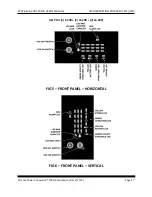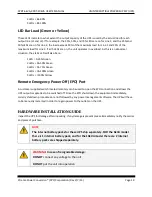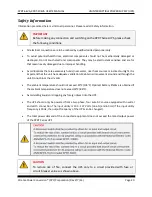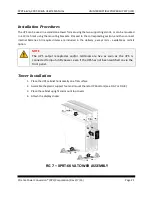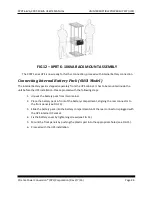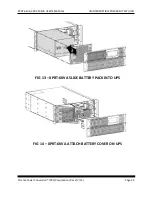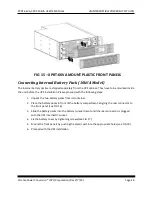
XPRT-6kVA, XPRT-10kVA USER’S MANUAL
UNINTERRUPTIBLE POWER SUPPLY (UPS)
Xtreme Power Conversion® (XPC) Corporation (Rev 2/7/13)
Page 12
Efficiency Optimizer Function
The Efficiency Optimizer Function is a new feature for the UPS, adding cost effectiveness, minimizing
power loss and reducing power consumption. Alternating between bypass and on-line modes is
achieved automatically and in accordance with the conditions of the utility power. On-line mode may be
used during times of intermittent power, and bypass mode used when power flows smoothly, in order
to obtain greatest efficiency. Irregularities can be detected in less than a second, and on-line mode
reactivates immediately. Switching back to on-line mode occurs when input voltage is outside ±10% of
nominal (±15% selectable), when input frequency is outside of ±3Hz or when no input line is available.
Although high efficiency is standard, the default operation is in on-line mode. Bypass can be activated in
the LCD panel; though on-line can be run permanently if preferred.
Free Run Mode
The UPS operates in Free Run Mode when input frequency is outside of the selected input frequency
range. Free Run Mode is when output frequency does not match input frequency. When starting the
UPS, the frequency regulation detected is 50 or 60 Hz ±0.25Hz.
Diagnostic Tests
When the UPS is started, a diagnostic test is automatically executed, checking the electronics and
batteries, reporting any problems on the LED display.
An Xtreme Battery Management system always monitors the conditions of the batteries, sending any
forewarnings if replacement of batteries is required. Every 30 days of normal mode operation, a battery
discharge test is automatically performed, reporting any problems on the LED display.
Except during the first 24 hours after startup while the UPS is in charging mode, diagnostic tests can be
performed manually from the front panel at any time.
System Configuration
The UPS device and the internal batteries make up the system. Depending on the site and load
requirements of the installation, certain additional options are available for the solution.
Planning a UPS system, the following should be taken into consideration:
•
The total demand of the protected system shall dictate the output power rating (VA). Allow a
margin for future expansion or calculation inaccuracies from measured power requirements.
•
Backup time required will indicate the battery size needed. If the load is less than the UPS
nominal power rating, then actual backup time is longer.
•
The following options are available:
o
Extended Battery Packs (maximum of 3 battery packs of same model)

















